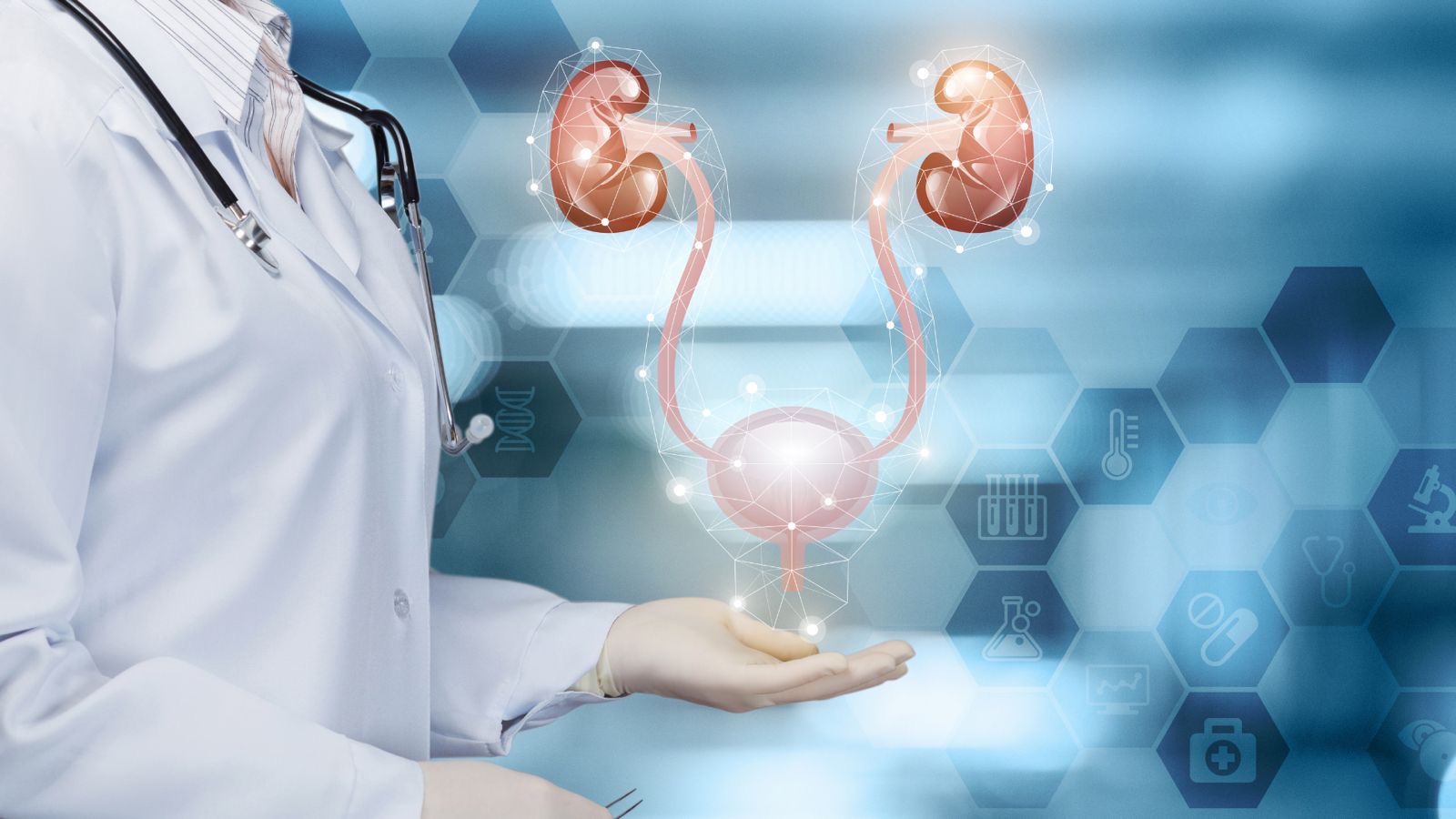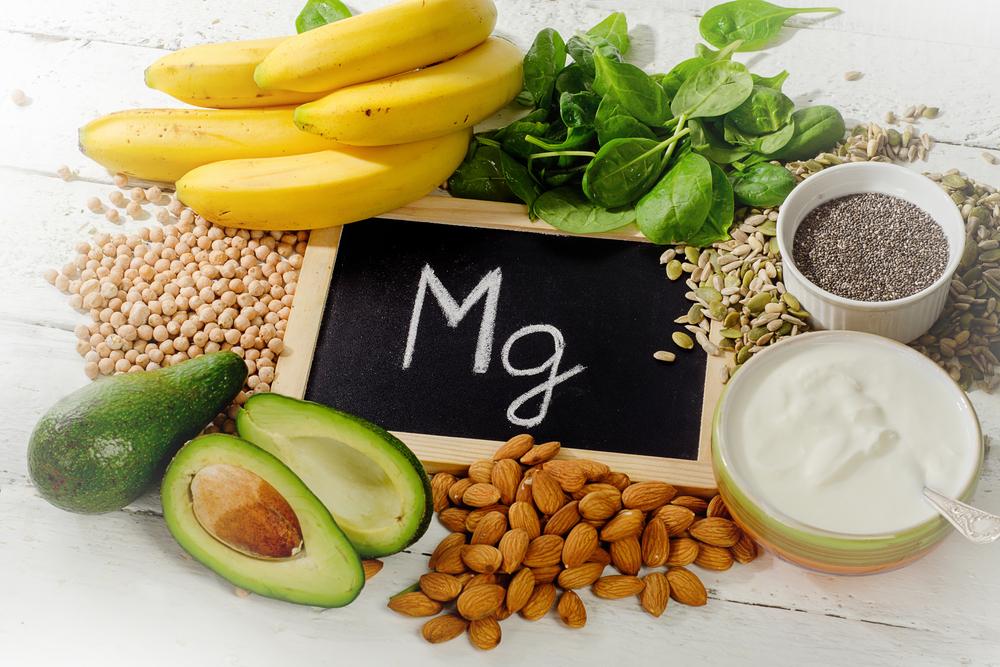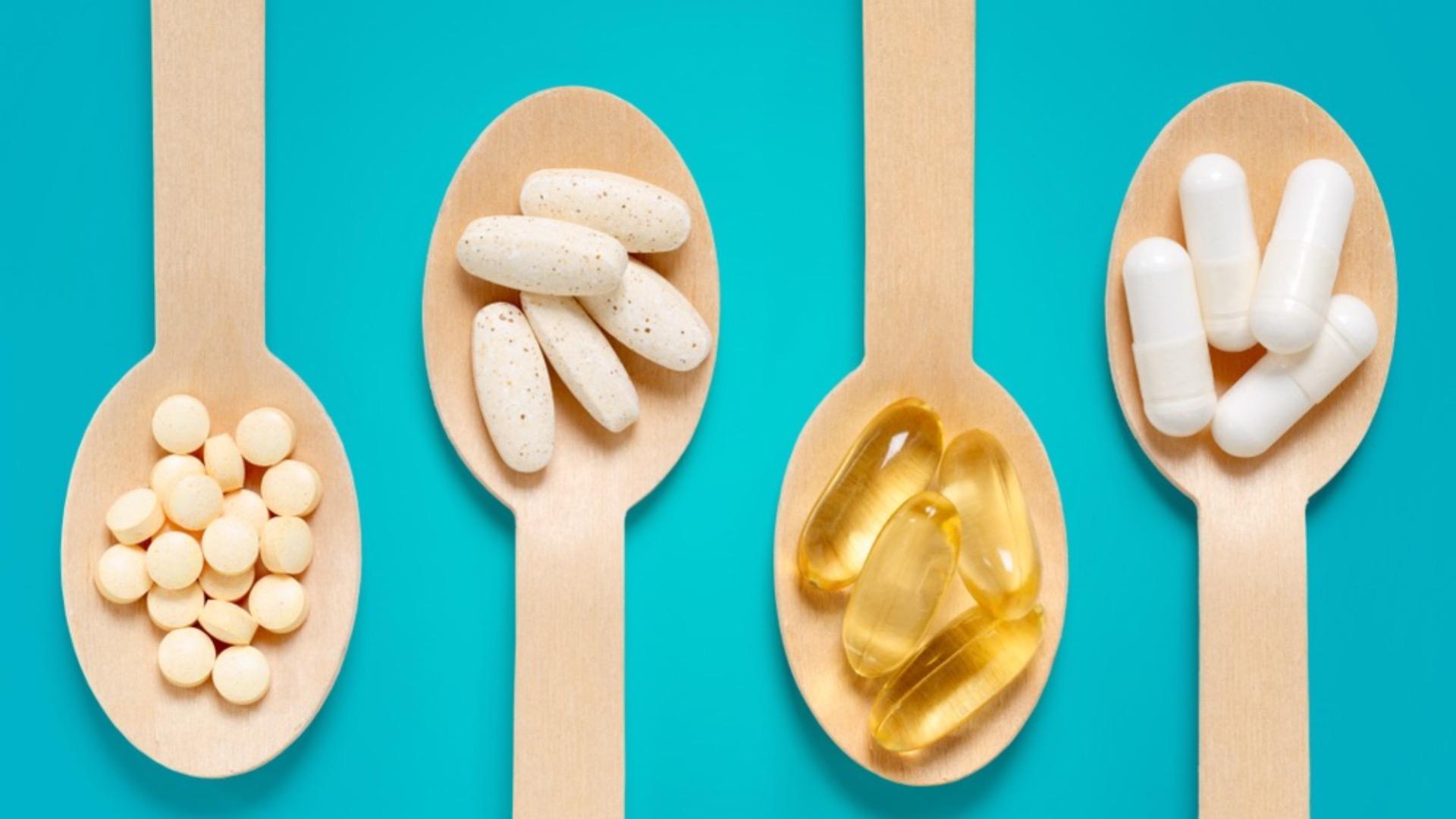-
£19.99

Why Does My Dog Need Minerals – Part One
- September 22, 2021
- 7 min read
If you have been following any nutrition nerds (including us here at My Pet Nutritionist) then you will have likely come across the terms macro and micronutrients. We tend to reference them more commonly in the human realms, but that doesn’t mean that they don’t also apply to our canine companions (and feline for that matter).
When we mention macronutrients we are referencing those needed in larger amounts in the body and they encompass protein, fat and carbohydrates. When we consider micronutrients we are looking at vitamins and minerals. Despite them being needed in micro amounts, they are still biologically necessary to all functions in the body. So, let’s take a look at minerals in a little more detail and see why your dog needs them.
What on earth does this mean we hear you wonder?
Well, let’s break it down. Minerals are naturally occurring, meaning they are not made by humans. They are inorganic, meaning they have never been alive. They are solid, meaning they are not liquid or gas. Each of them has a unique structure and arrangement which is how we know what they are.
For the dog we are interested in 17 essential minerals.
We have macrominerals which are needed in larger amounts and trace minerals which are needed in smaller amounts.
There is an increased risk of deficiency in:
Lastly, chloride supports digestive processes through its role in the production and release of hydrochloric acid in the stomach, and as we know, without this, foods won’t be properly digested and subsequently absorbed.
Low levels of chloride are usually found alongside existing health issues which result in electrolyte imbalances.
Sources of Chloride:
Why Is Magnesium So Important to Your Pet
But the one often forgotten role of magnesium is the part it plays in energy, so we’ll do a recap.
The bottom line is that insufficient micronutrient intake results in poor ATP production in the mitochondria. Remember that ATP is the currency of energy and the mitochondria is the powerplant of the cell, where it all happens.
Magnesium and copper are star minerals for making ATP and without enough ATP or energy, the body hasn’t got enough resources to do what it needs to!
In addition, a deficiency in magnesium can lead to mitochondrial damage.
Signs and Symptoms of Deficiency:
Findings Here
In the form of phospholipids, phosphorus is also a component of cell membrane structure and of the body’s key energy source, ATP.
Many proteins and sugars in the body are phosphorylated. In addition, phosphorus plays key roles in regulation of gene transcription, activation of enzymes, maintenance of normal pH in extracellular fluid, and intracellular energy storage.
A range of foods contain phosphorus, mainly in the form of phosphates and phosphate esters. Phosphorus in seeds for example, is in the form of phytic acid, the storage form of phosphorus. Because many species intestines lack the phytase enzyme, much phosphorus in this form is unavailable for absorption.
Low phosphorus levels in the body can include anorexia, anaemia, proximal muscle weakness, skeletal effects (bone pain, rickets, and osteomalacia), increased infection risk, ataxia, and confusion. But in most cases, hypophosphatemia (low phosphorus) is caused by existing health conditions, such as hyperparathyroidism, kidney disorders, and diabetic ketoacidosis.
In cases of chronic kidney disease, their ability to excrete phosphorus becomes compromised. This is why low phosphorus diets are often recommended.
Kidney Disease
For example, one heat shock cognate protein, involved in protein folding, autophagy, apoptosis and cell stability requires potassium to carry out these functions. In a deficit, cell senescence results, along with DNA damage, carcinogenesis, and neurodegeneration.
Findings Here
The bottom line is that potassium helps nerves and muscles to function correctly, it maintains a regular heartbeat and helps nutrients move into cells and waste products out of cells.
Times of Increased Potassium Need:
Salt has received a bad rap for decades, largely implicated in blood pressure with humans, but salt sensitivity is generally driven by insulin resistance and sympathetic overdrive.
In the fresh fed dog, we often see low sodium levels as opposed to high and so the inclusion of foods containing it is warranted.
One of the most important roles of sulfur is serving as a precursor in glutathione synthesis and promoting detoxification. The sulfur amino acids, methionine and cysteine promote protein synthesis as well as glutathione synthesis (and as we know, glutathione is the master antioxidant).
Eating a sulfur rich diet increase glutathione levels and reduces oxidative stress.
Glutathione also regulates prostaglandin biosynthesis which therefore modulates inflammatory responses. Most sulfur in the body is stored as glutathione in the liver and because inflammation depletes glutathione, it will also deplete sulfur.
Connective tissue, the skin, ligaments, and tendons require sulfur for proper cross-linking and extracellular matrix proteins like glycosaminoglycans (chondroitin sulfate for example). Keratin is also a sulfur-rich protein which as we know is important in hair and nail health.
Sulfur is needed to make bile acids for fat digestion, and it is a component of insulin, meaning it is needed for blood glucose regulation.
In the body there are a number of sulfur-dependent enzymes and proteins including SAMe, lipoprotein lipase and vitamin D sulfate. In addition, it is utilised in detoxification pathways including methylation.
Of further interest in the dog is that taurine is also a sulfur containing amino acid. Taurine regulates detoxification, bile acid conjugation, membrane stabilisation and cellular calcium modulation. It is important for muscle contractions, energy production and more! Taurine as we know plays a role in many conditions including heart disease, eye-related issues and platelet aggregation.
The actual sulfur content found in foods largely depends on the condition of the soil. Most soils are sulfur deplete. It is well known that grain-based diets result in sulfur deficiency.
Findings Here
Sulfur containing compounds like methionine and cysteine are mostly found in animal protein sources. Mussels, lamb heart and lamb kidney are some of the highest sulfur containing foods. A small amount of sulfur can be found in organosulfur compounds in broccoli and garlic.
If anything in this blog has made you wonder about the health status of your dog, then please check out our services to see if we may be able to help.
Thanks for reading,
MPN team x
When we mention macronutrients we are referencing those needed in larger amounts in the body and they encompass protein, fat and carbohydrates. When we consider micronutrients we are looking at vitamins and minerals. Despite them being needed in micro amounts, they are still biologically necessary to all functions in the body. So, let’s take a look at minerals in a little more detail and see why your dog needs them.
What is a Mineral?
A mineral is a naturally occurring inorganic solid, with a definite chemical composition, and an ordered atomic arrangement.
What on earth does this mean we hear you wonder?
Well, let’s break it down. Minerals are naturally occurring, meaning they are not made by humans. They are inorganic, meaning they have never been alive. They are solid, meaning they are not liquid or gas. Each of them has a unique structure and arrangement which is how we know what they are.
For the dog we are interested in 17 essential minerals.
We have macrominerals which are needed in larger amounts and trace minerals which are needed in smaller amounts.
Macrominerals
Calcium
You’ll likely be familiar with calcium as you were probably told to drink your milk so you would have strong teeth and bones. Calcium is the main structural component of skeleton and teeth, but it also plays a role in blood clotting. In addition, it is involved in the intracellular messaging triggering the contraction of muscle fibres. Calcium also plays a role in fat oxidation and it carries ATP (energy) with magnesium.
There is an increased risk of deficiency in:
- Diets containing large quantities of phosphorus and sodium.
- Fat malabsorption (fat binds calcium, reducing absorption).
- Vitamin D deficiency.
- Diets containing large quantities of oxalates.
- Poor bone mineralisation,
- Muscle cramping and spasm,
- Increased irritability of nerve cells,
- Abnormal blood clotting and increased bleeding after trauma.
Chloride
Chloride is one of the most important electrolytes found in the blood. It plays a key role in controlling the amount of water and type of compounds that go in and out of cells. It therefore plays a crucial role in homeostasis. Chloride also contributes to muscle function and this includes the heart. This mineral helps red blood cells exchange oxygen and carbon dioxide too!
Lastly, chloride supports digestive processes through its role in the production and release of hydrochloric acid in the stomach, and as we know, without this, foods won’t be properly digested and subsequently absorbed.
Low levels of chloride are usually found alongside existing health issues which result in electrolyte imbalances.
Sources of Chloride:
- Himalayan Salt
- Seaweed
Magnesium
Here at My Pet Nutritionist, we have a thing about Magnesium, for good reason. If you want to know more about this trusty mineral, then check out our full blog here:
Why Is Magnesium So Important to Your Pet
But the one often forgotten role of magnesium is the part it plays in energy, so we’ll do a recap.
The bottom line is that insufficient micronutrient intake results in poor ATP production in the mitochondria. Remember that ATP is the currency of energy and the mitochondria is the powerplant of the cell, where it all happens.
Magnesium and copper are star minerals for making ATP and without enough ATP or energy, the body hasn’t got enough resources to do what it needs to!
In addition, a deficiency in magnesium can lead to mitochondrial damage.
Signs and Symptoms of Deficiency:
- Muscle cramps and spasms
- Anorexia, nausea, vomiting
- Arrythmias
- Sodium and water retention
- Impaired action of vitamin D
- Diets emphasizing processed foods and refined grains (largely nutrient deplete)
- Strenuous training
- Periods of rapid growth
- Intestinal malabsorption
- Medications (diuretics, steroids, laxatives)
Findings Here
Phosphorus
Phosphorus in mainly used for the growth and repair of body tissues – it is a component part of bones, teeth, RNA and DNA.
In the form of phospholipids, phosphorus is also a component of cell membrane structure and of the body’s key energy source, ATP.
Many proteins and sugars in the body are phosphorylated. In addition, phosphorus plays key roles in regulation of gene transcription, activation of enzymes, maintenance of normal pH in extracellular fluid, and intracellular energy storage.
A range of foods contain phosphorus, mainly in the form of phosphates and phosphate esters. Phosphorus in seeds for example, is in the form of phytic acid, the storage form of phosphorus. Because many species intestines lack the phytase enzyme, much phosphorus in this form is unavailable for absorption.
Low phosphorus levels in the body can include anorexia, anaemia, proximal muscle weakness, skeletal effects (bone pain, rickets, and osteomalacia), increased infection risk, ataxia, and confusion. But in most cases, hypophosphatemia (low phosphorus) is caused by existing health conditions, such as hyperparathyroidism, kidney disorders, and diabetic ketoacidosis.
In cases of chronic kidney disease, their ability to excrete phosphorus becomes compromised. This is why low phosphorus diets are often recommended.
Kidney Disease
Potassium
Another electrolyte, potassium is also involved in energy production and membrane excitability and transport. Throughout the body there are a number of functions that are potassium dependent. If potassium is deficient, these enzymes or proteins are unable to carry out their job as they should.
For example, one heat shock cognate protein, involved in protein folding, autophagy, apoptosis and cell stability requires potassium to carry out these functions. In a deficit, cell senescence results, along with DNA damage, carcinogenesis, and neurodegeneration.
Findings Here
The bottom line is that potassium helps nerves and muscles to function correctly, it maintains a regular heartbeat and helps nutrients move into cells and waste products out of cells.
Times of Increased Potassium Need:
- Diarrhoea or vomiting
- Inflammatory bowel disorders
- Chronic kidney failure
- Diuretics
- Deficiency in magnesium
- Fatigue
- Muscle weakness
- Delayed gastric emptying
- Constipation
- Cardiac arrythmias
Sodium
Sodium is an essential nutrient involved in the maintenance of normal cellular homeostasis and in the regulation of fluid and electrolyte balance and blood pressure. Its role is crucial for maintaining extracellular fluid volume because of its important osmotic action and is equally important for the excitability of muscle and nerve cells and for the transport of nutrients and substrates through plasma membranes.
Salt has received a bad rap for decades, largely implicated in blood pressure with humans, but salt sensitivity is generally driven by insulin resistance and sympathetic overdrive.
In the fresh fed dog, we often see low sodium levels as opposed to high and so the inclusion of foods containing it is warranted.
Sulfur
Sulfur, after calcium and phosphorus, is the most abundant mineral element found in the body.
One of the most important roles of sulfur is serving as a precursor in glutathione synthesis and promoting detoxification. The sulfur amino acids, methionine and cysteine promote protein synthesis as well as glutathione synthesis (and as we know, glutathione is the master antioxidant).
Eating a sulfur rich diet increase glutathione levels and reduces oxidative stress.
Glutathione also regulates prostaglandin biosynthesis which therefore modulates inflammatory responses. Most sulfur in the body is stored as glutathione in the liver and because inflammation depletes glutathione, it will also deplete sulfur.
Connective tissue, the skin, ligaments, and tendons require sulfur for proper cross-linking and extracellular matrix proteins like glycosaminoglycans (chondroitin sulfate for example). Keratin is also a sulfur-rich protein which as we know is important in hair and nail health.
Sulfur is needed to make bile acids for fat digestion, and it is a component of insulin, meaning it is needed for blood glucose regulation.
In the body there are a number of sulfur-dependent enzymes and proteins including SAMe, lipoprotein lipase and vitamin D sulfate. In addition, it is utilised in detoxification pathways including methylation.
Of further interest in the dog is that taurine is also a sulfur containing amino acid. Taurine regulates detoxification, bile acid conjugation, membrane stabilisation and cellular calcium modulation. It is important for muscle contractions, energy production and more! Taurine as we know plays a role in many conditions including heart disease, eye-related issues and platelet aggregation.
The actual sulfur content found in foods largely depends on the condition of the soil. Most soils are sulfur deplete. It is well known that grain-based diets result in sulfur deficiency.
Findings Here
Sulfur containing compounds like methionine and cysteine are mostly found in animal protein sources. Mussels, lamb heart and lamb kidney are some of the highest sulfur containing foods. A small amount of sulfur can be found in organosulfur compounds in broccoli and garlic.
Summary
If you’ve made it this far, you’ll have noticed that we’ve only just covered the macrominerals, we’ve still got the trace minerals to go. We hope it’s clear just how important minerals are in the body, and that you’ll join us for part two.
If anything in this blog has made you wonder about the health status of your dog, then please check out our services to see if we may be able to help.
Thanks for reading,
MPN team x
Customer Reviews
Explore related products
Related articles

Disease ManagementGeneral HealthArthritisCancerDigestionHypothyroidismItching & AllergiesKidney DiseaseLiver HealthPancreatitisUrinary Issues
Best Diet for Struvite Crystals in Dogs
Mar 13 2024
•
5 mins

Disease ManagementGeneral HealthArthritisCancerDigestionHypothyroidismItching & AllergiesKidney DiseaseLiver HealthPancreatitisUrinary Issues
Oxalate Stones – What You Need to Know
Jul 13 2023
•
2 mins 40 secs

Disease ManagementGeneral HealthArthritisCancerDigestionHypothyroidismItching & AllergiesKidney DiseaseLiver HealthPancreatitisUrinary Issues
Cysteine Stones … Everything You Need to Know
Jun 01 2023
•
3 mins 50 secs

Disease ManagementGeneral HealthArthritisCancerDigestionHypothyroidismItching & AllergiesKidney DiseaseLiver HealthPancreatitisUrinary Issues
The Ultimate Guide to Urinary Stones
Mar 22 2023
•
7 mins 46 secs

Disease ManagementGeneral HealthArthritisCancerDigestionHypothyroidismItching & AllergiesKidney DiseaseLiver HealthPancreatitisUrinary Issues
3 Tips to Support Your Pet’s Urinary Health
May 26 2022
•
4 mins 46 secs

Disease ManagementGeneral HealthArthritisCancerDigestionHypothyroidismItching & AllergiesKidney DiseaseLiver HealthPancreatitisUrinary Issues
What Does the Microbiome Have to Do With My Dog’s Bladder Stones?
May 24 2022
•
6 mins 39 secs

Disease ManagementGeneral HealthArthritisCancerDigestionHypothyroidismItching & AllergiesKidney DiseaseLiver HealthPancreatitisUrinary Issues
What Can I Do For My Dog’s Bladder Stones
Nov 04 2021
•
4 mins 56 secs

Disease ManagementGeneral HealthArthritisCancerDigestionHypothyroidismItching & AllergiesKidney DiseaseLiver HealthPancreatitisUrinary Issues
A Brief Guide to The Canine Urinary System
Oct 06 2021
•
5 mins 6 secs

Disease ManagementGeneral HealthArthritisCancerDigestionHypothyroidismItching & AllergiesKidney DiseaseLiver HealthPancreatitisUrinary Issues
Why Does My Dog Need Minerals – Part Two
Sep 23 2021
•
12 min read

Disease ManagementGeneral HealthArthritisCancerDigestionHypothyroidismItching & AllergiesKidney DiseaseLiver HealthPancreatitisUrinary Issues
Why Does My Dog Need Minerals – Part One
Sep 22 2021
•
7 min read

Disease ManagementGeneral HealthArthritisCancerDigestionHypothyroidismItching & AllergiesKidney DiseaseLiver HealthPancreatitisUrinary Issues
Does My Pet Need to Detox
Apr 15 2021
•
8 min read

Disease ManagementGeneral HealthArthritisCancerDigestionHypothyroidismItching & AllergiesKidney DiseaseLiver HealthPancreatitisUrinary Issues
Obesity in Pets Part 1
Feb 25 2021
•
9 min read

Disease ManagementGeneral HealthArthritisCancerDigestionHypothyroidismItching & AllergiesKidney DiseaseLiver HealthPancreatitisUrinary Issues
Why Is My Dog A Fussy Eater?
Jan 18 2021
•
10 min read

Disease ManagementGeneral HealthArthritisCancerDigestionHypothyroidismItching & AllergiesKidney DiseaseLiver HealthPancreatitisUrinary Issues
Why is My Dog Losing His Hair?
Jan 04 2021
•
7 min read

Disease ManagementGeneral HealthArthritisCancerDigestionHypothyroidismItching & AllergiesKidney DiseaseLiver HealthPancreatitisUrinary Issues
Why is Magnesium So Important to Your Pet
Oct 02 2020
•
10 min read

Disease ManagementGeneral HealthArthritisCancerDigestionHypothyroidismItching & AllergiesKidney DiseaseLiver HealthPancreatitisUrinary Issues
Why Zinc is Important for your Dog
Sep 10 2020
•
8 min read

Disease ManagementGeneral HealthArthritisCancerDigestionHypothyroidismItching & AllergiesKidney DiseaseLiver HealthPancreatitisUrinary Issues
7 Wonderful Herbs for Dogs
Jul 06 2020
•
9 min read

Disease ManagementGeneral HealthArthritisCancerDigestionHypothyroidismItching & AllergiesKidney DiseaseLiver HealthPancreatitisUrinary Issues
Does My Dog Have a Vitamin Deficiency?
May 04 2020
•
15 min read

Disease ManagementGeneral HealthArthritisCancerDigestionHypothyroidismItching & AllergiesKidney DiseaseLiver HealthPancreatitisUrinary Issues
The Ultimate Natural UT Guide for Pets
Apr 14 2020
•
9 min read

Disease ManagementGeneral HealthArthritisCancerDigestionHypothyroidismItching & AllergiesKidney DiseaseLiver HealthPancreatitisUrinary Issues
7 Top Reasons to use Clay in your Dog’s Diet Regime
Feb 20 2020
•
5 min read
✕










